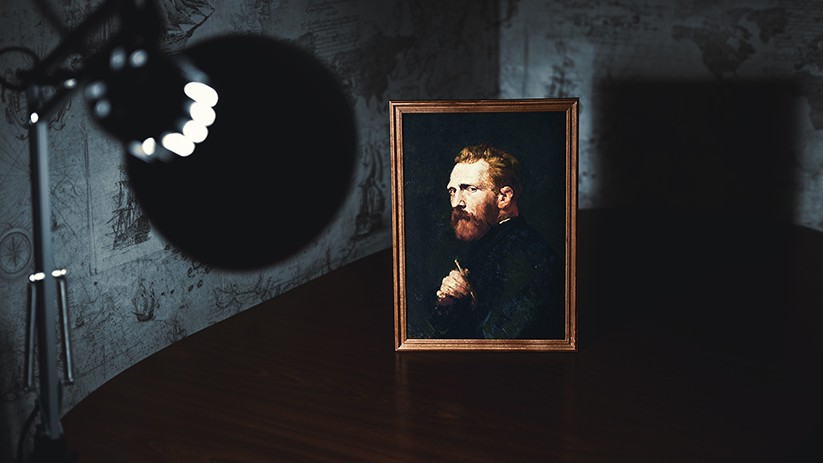5 Mistakes You Should Avoid to Better Preserve Your Paintings
Many people wonder how to better preserve paintings. Indeed, there is nothing more opulent than the incredible look of original paintings hung throughout a home. Having a collection of artworks on the walls is the best way to create a unique interior design that is full of enviable conversation pieces. The rich textures of a painting create a beautiful look that no well-designed home should be without.
To maintain the original beauty of their paintings, art collectors must make sure their artworks are properly cared for, so they may be enjoyed for years to come.
There are many common mistakes that are made when art owners hang their artwork at home. By avoiding the five mistakes below, art collectors can make sure the artwork they are so proud of stays in excellent condition for a longer period of time.

1. Hanging Your Painting in Hot or Smoky Areas
There is no worst place than hanging your painting above a mantel, near radiators and heaters, or in bathrooms and kitchens.
Heat can lead to thermal tensions, moisture reductions, and even chemical reactions within paintings that can damage both the paint layer and the support, sometimes even irreversibly.
Excessive heat can damage the support by causing creases, warping, weakening and breaking of the fibers. It can also damage the paint layer by causing cracking, losses and in worse circumstances it can cause paint bubbling or blistering.
Even specially made frames can’t guarantee that the heat from a fireplace, or other heat sources, won’t affect the painting. These damaging effects from a fireplace also apply to radiators, heating vents, stoves, and other heat sources.
The smoke and soot created from heat sources will lead to a buildup on the surface of the painting that will need to be removed, or else the colors and details of the painting will be severely obstructed.
2. Exposing Paintings to Sunlight and Direct Lighting
When a painting or drawing is continually exposed to sunlight, the colors and details of the artwork can fade and the varnish can begin to discolor much more quickly. Some paints can start chalking if exposed to UV light for too long, while the binders and varnishes can embrittle and crack. Indeed, severe sunlight damage can be irreversible.
Art owners who notice their painting or drawing is receiving direct sunlight should move the artwork to another area immediately. For homes with a large amount of natural light, special frames with glass that protects from UV rays can be used. However, they may not block out all the harmful rays, so finding the area least affected by natural light and hanging the artwork there is strongly suggested.
Also, make sure your painting is brightened by indirect lighting or ceiling-mounted spotlights, rather than lights that attach to the top of the frame and hang over the picture.

3. Hanging in Areas with High Humidity
When a painting faces prolonged humidity, it can suffer a wide range of damage. Some canvas could shrink, while the frame could expand, putting considerable strain on your painting. This would lead to cracks, delamination, warping, and rippling in the paint and the canvas. For paintings on wooden panels, this cracking and warping can be much worse. This damage can be irreversible.
While it can be difficult to control the humidity, there are a few ways to make sure that a painting doesn’t fall victim to a humid home. The best way to avoid humidity is to place paintings in dry rooms with minimal moisture in the air. This means that paintings should never be placed in a bathroom, near a kitchen sink, or in sunrooms or patios. For those who live in humid parts of the world, such as Florida, running a humidifier in the room where paintings are kept can drastically reduce the effects of moisture in the air on a painting.
In addition, mold and mildew can have a devastating effect on your painting. With paintings on canvas microorganisms generally begin attacking the reverse side and then they penetrate every layer.
Protect your paintings by keeping them in an area that is below 60% relative humidity and making sure there are no drastic fluctuations in temperature and humidity levels.
4. Using Improper Hanging Methods
When a painting is hung with improper fixings, the weight will not be evenly distributed between the supports. Over time, this can cause stress to backboards and frames and may lead to cracks, warps, or separation between the support of the painting and the painting itself. Damage to the supports of the painting can then lead to creases, rips, or warps in the canvas or board. Improper hanging can also increase the chance of a painting falling off the wall accidentally. In addition to using proper fixings, artwork should always be hung on a flat surface. Using a painting to cover things like outlets, wires, fuse boxes, or other objects that protrude from the wall can lead to indentations in the painting, stretched canvas, or rips and tears in the piece.
The best way to hang paintings is with D rings attached to the frame, or, in its absence to the stretcher. These pieces of hardware should be attached on the left and right sides, which will ensure the painting is fully supported, keep the painting from hanging forward, and prevent the painting from being easily knocked crooked. The D rings should then be attached to the wall with picture hooks, not screws or nails. Once the painting is hung, it’s important to carefully test how secure the painting is on the wall.
For much larger paintings, D rings and standard picture screws won’t do the job. Instead, hardware for hanging large pictures can be ordered and installed.
By hanging a painting properly, collectors and art lovers will be able to display their pieces without worrying about damage to the painting.
5. Improper Cleaning and Maintenance

Using cleaning products and tools that damage the surface of a painting is something conservators see very often.
Well-meaning art owners will often use dusters they believe are gentle, like feather dusters or electrostatic dusters, to remove dust and debris from their painting. While these tools may seem gentle, they can snag on any rough areas of the painting or scratch the painting’s surface.
Another housekeeping mistake that may damage a painting is the use of aerosol sprays, like air fresheners, furniture cleaners, or multipurpose cleaners near the painting. These particles are too small to see and can travel very far, so art owners don’t realize they are causing this damage.
To avoid these housekeeping mistakes, paintings should be dusted infrequently, about every four or five months, with sable, badger hair, or similar brushes. These brushes can be easily ordered or purchased at an art supply store. Before dusting the painting, it’s important to check for any cracks, flaking, or chips in the paint. To avoid further harm, paintings with any damage should not be dusted until they are restored.
Aerosols or fine mist cleaning products should never be used anywhere near a painting. If these types of cleaners must be used, the product can be sprayed on a rag away from the painting and then used, rather than spraying directly onto nearby surfaces.
Avoiding these housekeeping mistakes is a relatively easy way to ensure a painting doesn’t suffer serious damage so extensive art conservation won’t be needed.
Keep Prized Paintings in Great Shape
While there is no feasible way to completely halt a painting’s aging, especially if it is displayed in a home, making sure that it is treated properly can help art owners preserve their treasure. Learning how to care for oil paintings on canvas and other paintings is the first step in being a responsible art owner. By avoiding these mistakes, art owners can turn their prized painting into a family heirloom. If any damage from these five common mistakes has occurred, a trusted conservator can restore and preserve the prized artwork so it may continue to reflect the artist’s original intention for years to come.
Should you find your art in this condition, call promptly an experienced art conservator.
At Stella Art Conservation our experienced team of conservators can help you care for your artworks by assessing the environmental conditions your collection is subjected to, and can make recommendations if adjustments need to be made.